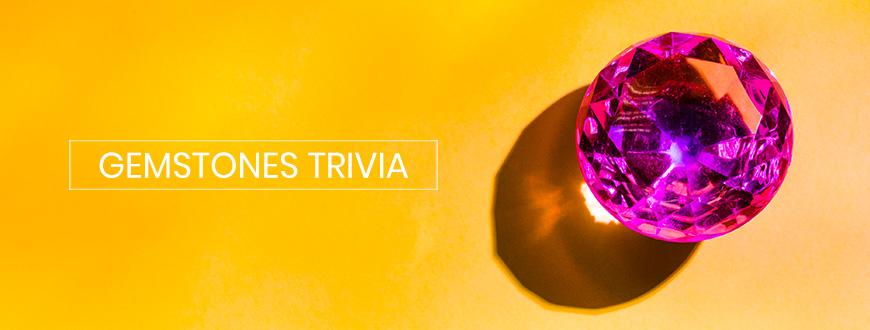Kalyan Wiki

Gemstones Trivia
Humankind has been obsessed with gemstones starting from ancient civilisations to this modern era. This beautiful work of art by nature is made naturally from minerals in Earth's crust. Gemstone jewellery has been a part of our culture with its simplicity, elegance and colourful appearance gemstones and is still ruling the minds of jewellery lovers around world wide
Let’s look at some interesting facts about gemstones:
- > Among the more than 2,000 identified natural minerals, fewer than 100 are gemstones.
- > There are three different categories of gemstones: Precious Semi-precious and Organic. Diamonds, rubies, and sapphires are examples of precious gem. While amethyst, rose quartz falls under the semi-precious category. Pearl, coral come under organic gemstones.
- > The diamond was believed to be the tears of the gods or splinters that had broken off of Egyptians' falling stars.
Sergio or Carbonado do Sergio is the largest diamond ever seen. This black carbonado diamond is a total of 3,167 carats.
Ruby, the pink to blood-red coloured gemstone is termed as 'rarest gemstones' because of its difficulty.
The Tourmaline or “Rainbow Gem” and opal are the most colourful gemstones ever found. Tourmaline is the only gem that can come in every colour.
Amber, the fossilised tree resin is the softest gem in the world. Baltic amber is the most vital type of amber which is used to make jewellery.
Name Garnet is derived from pomegranate seeds in Latin. They are silicate minerals most commonly in dark red colour.
The Peridot gemstone was an all-time favourite of Cleopatra. It is believed that she also adorned Emerald gemstone mistaking it for her favourite Peridot.
Lapis Lazuli is a deep blue metamorphic rock used as an eyeshadow in Ancient Egypt after crushing it to its powdered form.
The stone ‘The star of Asia’, is well-known for its significant size, rich colour and clear lead. This 330-carat cabochon-cut star sapphire once belonged to the Maharaja of Jodhpur.
As we have seen in most cases, Sapphires are known for their vibrant blue colour. But they are also found in yellow, pink and many other colours too.
Pearl is the most sought-after jewellery gem after diamond. Creating pearls takes between a year and three years to complete.
Pink Star Diamond or the ‘Fancy Vivid Pink’ diamond,with an $83 million,, selling price, is the most expensive diamond ever.
Topaz is the largest faceted gemstone in the world. It was found in Brazil and weighed almost 37,000 carats!!!
Agate is a gemstone that has bands of colours, creating stripes in it naturally. It is because of other minerals, such as quartz or chalcedony, within the actual gemstone.
The word ‘Amethyst’ was derived from the Greek word ‘not to intoxicate’ as they believed that drinking wine from an amethyst cup can prevent drunkenness.
The Tanzanite is the blue, and violet-blue variety gem found only at Mt Kilimanjaro in Tanzania, making it more valuable.







